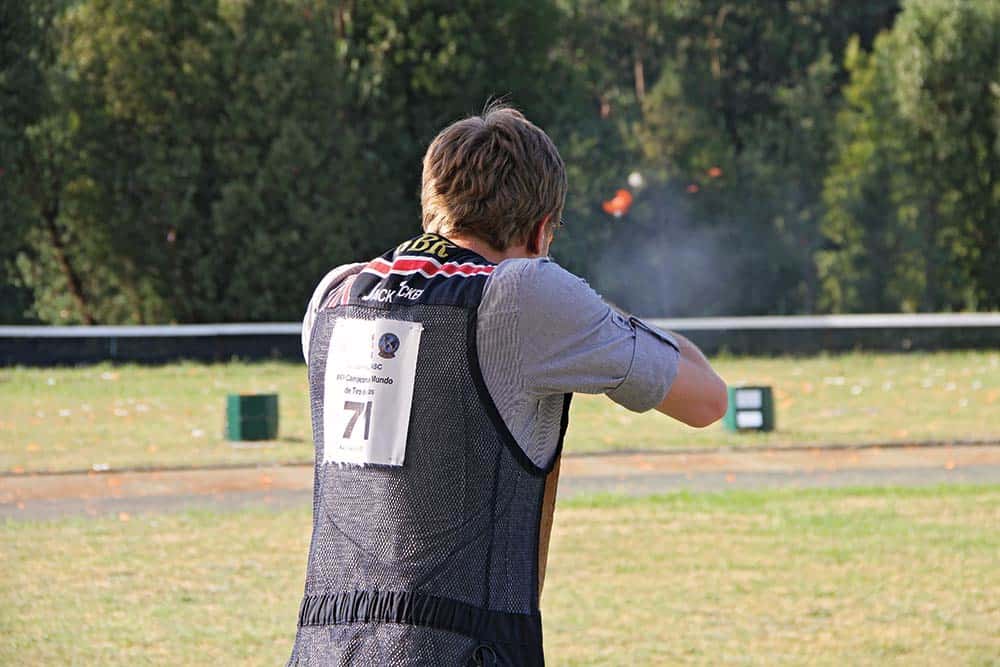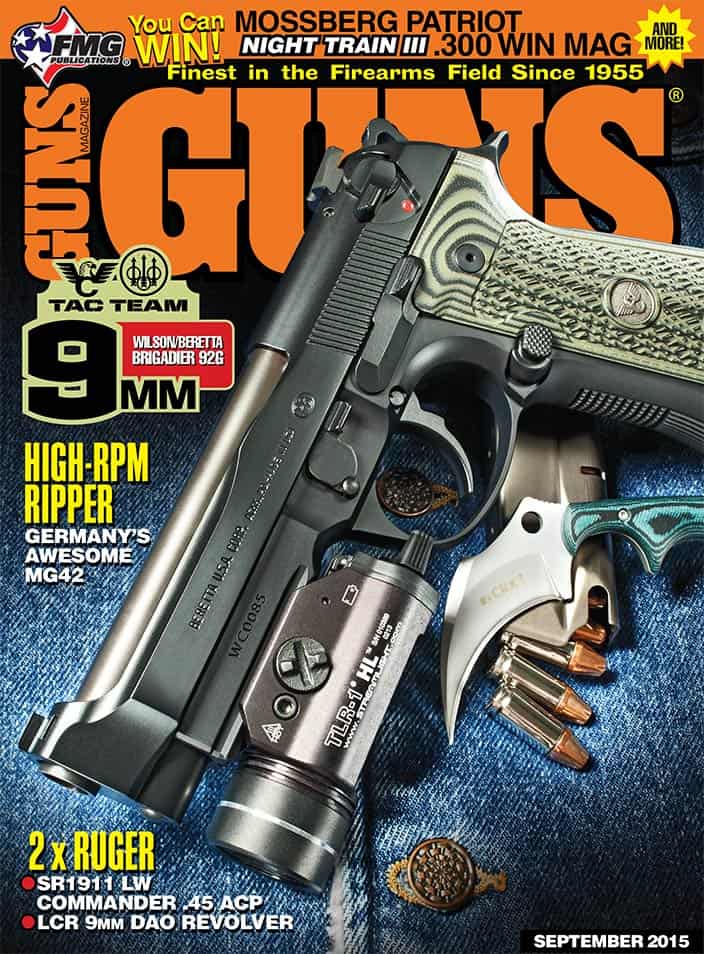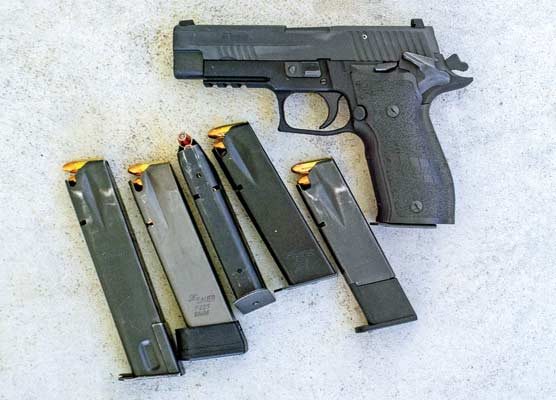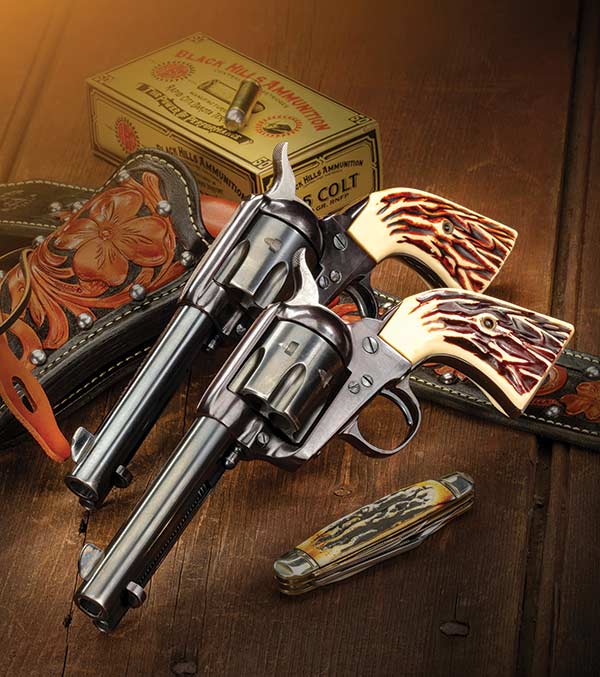Helice
Pure Instinctive Shotgunning
Over the course of my shooting career, I’ve shot a lot of different and obscure shooting games. Some very impromptu, such as taking my shotgun and shooting at a Ritz cracker thrown off a hand-held clay target thrower. That little cracker would zip through the air twisting, turning and zigzagging like the Viper roller coaster ride at Magic Mountain. Periodically, we would have to stop and clean off the throwing plate as it caked up with salt from the cracker.
That was the most fun I ever had shooting my shotgun… until I found another game.
It’s similar, but a lot more difficult: the game of Helice, also known as ZZ Birds or Electrocibles. While not a well-known sport in the United States, it’s shot throughout the world. Governed in America by the United States Helice Association, the international governing body of the sport is an organization known as FITASC. An acronym for the French words: Fédération Internationale de Tir aux Armes Sportives de Chasse, which explains why we just call it FITASC.
There’s not a lot history to be found on this sport other than it originated in Belgium during the 1960’s as an alternative to the banned sport of live pigeon shooting. Here in the US only about 150 dues-paying members belong to the association, but those who shoot it have an unmatched passion for the sport.
I started shooting ZZ Bird’s in the late ’90’s. The challenge to this game is the randomization and erratic, unpredictable flight of the target. Even in Olympic Trap, the target starts on a flight path and stays on that flight path and the shooter pretty much knows where the target is going. Not so in Helice, which is what makes the game so exciting and difficult.
The target or Helice consists of two winged plastic propellers, usually orange with a plastic, standard target-size white cap attached to the center that looks similar to a clay target. The white cap is known as a “Witness Cap.” The plastic propellers are rotated at a high speed, approximately 10,000 rotations per minute while sitting on the trap.
The format for the game is pretty simple. It’s shot on a field shaped in a ring. The ring is 46 meters in length and 21 meters wide. There are five boxes in the center of the ring 25 meters directly in front of the shooter. Each box contains a trap spinning the target before it is released. The fence at the ring perimeter is 21 meters beyond the traps.
When a target is called for, one Helice target is randomly released from one of the five traps in the center of the Helice ring. Flying out, twisting and turning, the Helice target buzzes through the air at random speeds. The name ZZ came from the inventor because of the zigzagging of the flight path.
The game is to shoot the Helice target when it’s ejected from the trap and separate the white Witness Cap from the propellers. Only two shots can be taken. Sounds easy enough, except there’s this one small rule. The Witness Cap has to separate from the propellers and land inside the fenced ring area. If the target is shot and the Witness Cap does not separate, it’s a lost target, even if it lands inside the fenced area. If the Witness Cap does separate from the propellers, but lands outside of the fenced area, it’s a lost target. Either way, there are no points. Once the target flies out of the ring, it is against the rules to shoot at it.
A good shot. The shot by Jack Tucker (above) of the England Helice Shooting Team has separated the white witness cap from the propeller body and will be scored a hit if it lands within the ring. The Helice traps (left) are quiet and the ring is covered with the remains of targets after a day of Helice. Photos: US Helice Association
So, to break this all down, from the time the shooter calls for the target till the time it flies out of the ring is less than 2 seconds. And the shooter doesn’t know which trap is going to release the target or the flight path it will take. As a result, Helice requires a move not used in any of the other clay target games. Not only do you have to be fast, but fearless. The move is quick and exact. Only two shots are allowed at a target and they are taken in quick succession in order to ensure the Witness Cap separates. There is no time for correction or to follow the target to confirm the lead.
Guns and ammunition for this game are pretty much standard. Like the Olympic shotgun disciplines, there are restrictions on the ammunition used. It can’t be more than a 1-ounce load and shot size no larger than 7-1/2’s. Because the targets fly so quickly and erratically, fast loads are used—typically 1,250 fps or faster.
Over/under or side-by-sides are the types of shotguns used. Semi-auto guns don’t cycle fast enough for this game. Looking at the gun racks, you’ll find a lot of Kriegoff K-80, Beretta and Zoli shotguns, all 12 gauge. Using a smaller gauge in this sport is a disadvantage. The selected choke for the shotgun is usually full and fuller. Some of the more seasoned shooters have opened up the choke in the first barrel using an improved modified. Either way, getting as much mass on the target as fast as you can is the strategy.
Because of time and lack of venues, Helice has yet to catch on strongly in the USA. This is the Helice ring (above) at the Dallas Gun Club in Dallas, Texas. The Helice target comes in two pieces (below), with the shooter responsible for separating them with gunfire. Here, the white Witness Cap has yet to be attached. Photos: US Helice Association
A match is 30 targets, shot 5 at a time and it typically takes all day. Most places only have one ring and all the shooters entered have to shoot the first set of 5 targets before the second set of 5 targets can be shot. That’s known as “turning the crank,” meaning all shooters have shot the first set of five. One “crank” is five targets. There are six cranks to a match.
Only one person shoots at a time and it takes 10 to 25 minutes to shoot a set of five targets, depending on the shooter. As the shooter stands on the line, they call out “Ready.” The puller prepares and as the shooter calls “Pull,” one Helice target is released from one of the five boxes.
Now, I know what you’re thinking. Five boxes, five targets. It’s a process of elimination. Except the trap in each box have two targets ready to be released. So, even though a trap has already released one of the targets, there’s still one left. There’s five boxes, but 10 targets of which only five will be released.
So, if this game is so exciting, why isn’t it more popular? I asked Mike Higgins, the board president of the US Helice Association. He explained there were not many Helice rings in the country and the game is slow.
The 30 targets take all day to complete. It’s also a little pricey at about $4 per target. That’s $120 for one day of shooting.
Like the Olympic sports, there are international competitions (Grand Prix and a World Championship). The United Stated does send a team through the US Helice Association which conducts matches throughout the year to select the team.
Helice is instinct shooting at its most extreme. If you enjoy a good challenge, try it.
United States Helice Association
7750 N MacArthur Blvd., Suite 120-324
Irving, TX 75063
(817) 296-3104
www.ushelice.com







